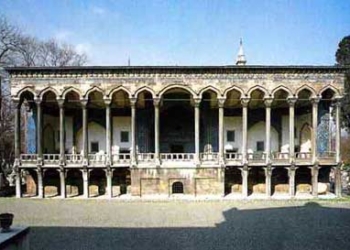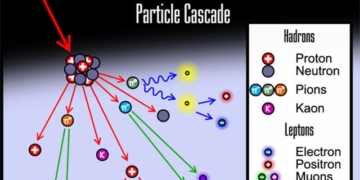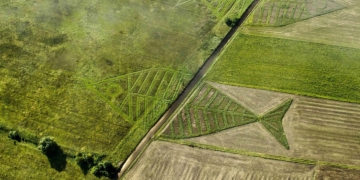The Secret Behind Roman Concrete That Has Withstood Over 2,000 Years Revealed by Scientists
Many wonders of the ancient world are linked to the ingenuity of the Romans, exemplified by the Pantheon and the Colosseum. Despite being over 2,000 years old and enduring numerous natural disasters, weather changes, wars, and vandalism, they continue to stand strong through time.
The concrete walls that you can touch today are the same walls built by the Romans two millennia ago. Furthermore, the dome of the Pantheon remains the largest unreinforced dome in the world.
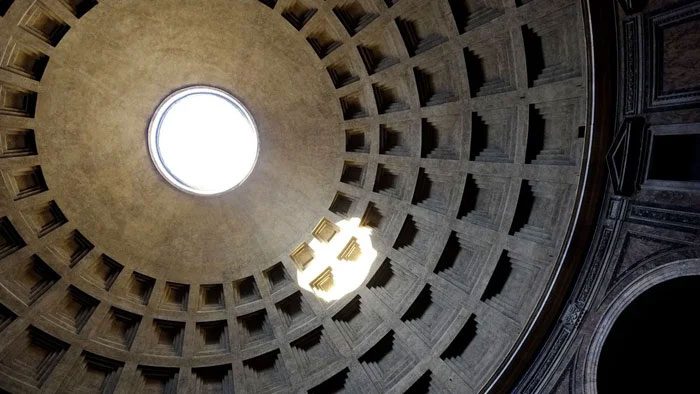
The Pantheon has the largest unreinforced dome in the world.
Unfortunately, it seems that the secret behind the strength of Roman concrete had been lost over time. Recently, a team of scientists from the United States, Switzerland, and Italy successfully collaborated to decode that secret. This research has spanned several decades due to various research groups’ curiosity or desire to apply the ancient Roman “technology” in modern structures that require high durability, such as docks, drainage systems, or areas prone to earthquakes.
They analyzed samples taken from a city wall at the archaeological site of Privernum in central Italy, which has a composition similar to other types of concrete found throughout ancient Rome.
They discovered that the white chunks in the concrete, known as lime clasts, help the concrete to self-heal cracks that develop over time. These white chunks were previously overlooked as they were thought to be a result of careless mixing or low-quality materials.
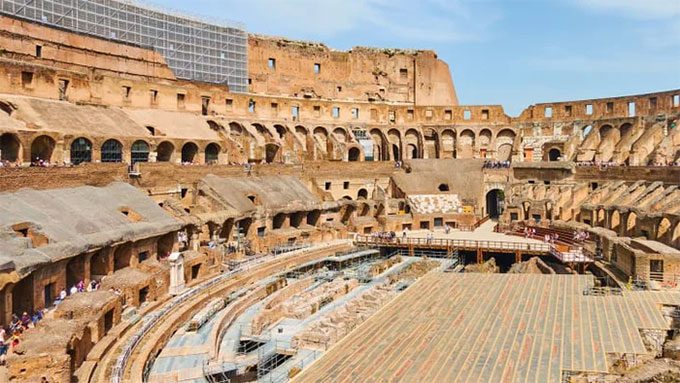
This new discovery could make modern concrete production more sustainable, potentially shaking human society as the Romans once did.
“Concrete enabled the Romans to have an architectural revolution,” said Professor Admir Masic from MIT in the study. “The Romans were able to create and transform cities into extraordinary and beautiful places to live. And that revolution completely changed the way humans interacted.”
How Limestone Enhances the Durability of Roman Concrete: Unique Self-Healing Ability
Concrete is essentially artificial stone, formed by mixing cement – a binding agent typically made from limestone, fine aggregates (sand or finely crushed stone), and coarse aggregates (gravel or crushed stone), along with water.
Masic noted that Roman texts suggested using slaked lime (when lime is mixed with water before being added) in the binder, which is why scholars believed this was how Roman concrete was created.
With further research, the scientists concluded that the white lime chunks resulted from using quicklime (calcium oxide) – a dry form of limestone, the most reactive and dangerous form – when mixing concrete, rather than adding slaked lime.

Microscopic structure of a piece of ancient Roman concrete. Red indicates calcium, blue indicates silicon, and green indicates aluminum. The large red part at the bottom is a calcium-rich limestone chunk responsible for the self-healing properties of Roman concrete.
Additional analyses of the concrete revealed that the lime layers formed at extreme temperatures due to the use of quicklime and “hot mixing” are key to the sustainable qualities of the concrete.
Masic stated in a press release: “The benefits of hot mixing hit two targets. First, when the entire concrete is heated to high temperatures, it produces chemical compounds that cannot be formed if you only use slaked lime, creating related compounds that would not form without high temperatures. Second, this increase in temperature significantly reduces the curing and setting time multiple times since all reactions are accelerated, allowing for much faster construction.”
To investigate whether the lime clasts were responsible for the self-healing ability of Roman concrete, the team conducted an experiment.
They created two samples of concrete, one according to the Roman formula and the other made to modern standards, and intentionally cracked them. After two weeks, water could not flow through the Roman concrete sample, while it flowed straight through the concrete made without quicklime using modern methods.
Their findings showed that the lime clasts can dissolve into cracks and crystallize after contact with water, healing weather-induced cracks before they spread. The researchers noted that this self-healing potential could pave the way for longer-lasting and therefore more sustainable modern concrete production.
According to the study, such a move would reduce carbon emissions from concrete, which accounts for up to 8% of global greenhouse gas emissions.
For many years, researchers believed that volcanic ash from the Pozzuoli area near the Bay of Naples was what made Roman concrete so solid. This ash was transported throughout the vast Roman Empire for use in construction and was described by architects and historians of the time as a key component in concrete production.
Masic stated that both ash and limestone are important, but limestone has been overlooked in past studies.










































